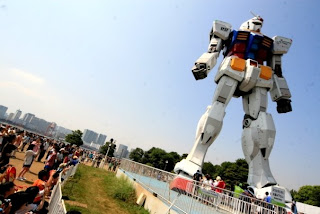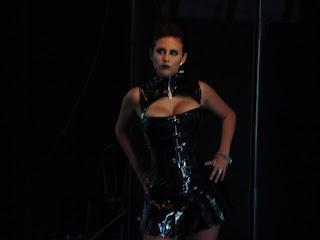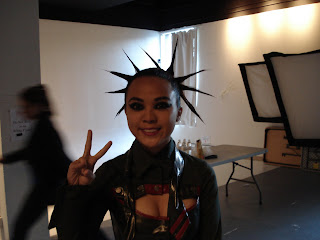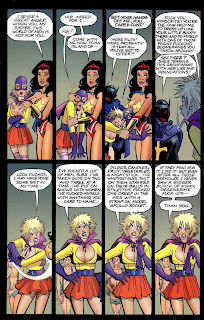


.jpg)

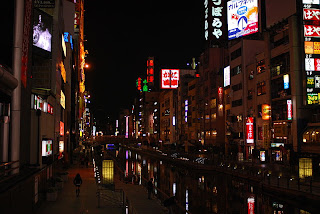
I'm a huge fan of Gantz - quite possible the most nihilist manga out there that is still running. As I mentioned in a previous post, it's now being published in Tankobon format (collected volumes). One of the big reasons I enjoy it so much is not the ultra-violence, the fan service S&M gear everyone is wearing, the borderline pornography or the lack of a socially-redeeming question - no, the reason I like it is that it's very much based in the real world of Tokyo's city streets. I used to live there, fully integrated into that society as a tax-paying, commuting, white-collar working individual. And after a hard night's heavy drinking (which was quite common), it thrilled me to see some of its neighborhoods rife with demons and blown apart with science fiction weaponry. Some of the neighborhoods and districts of Tokyo were explicitly known, others I've had to guess based on the visuals provided:
Ikebukuro - scene of the battle between the Gantz players and the Oni Aliens, where regular humans could finally see the bad guys and the common masses really started to freak out. Ikebukuro is not much more than a shopping district, sort of a lower class Shinjuku. It has its own red light district and similar to Shinjuku, is pretty much its own self-enclosed city.
Shinjuku West Gate - where Shion Izumi gunned down tons of innocent victims in a fucked-up effort to recruit new Gantz members. West Gate is Shinjuku's main shopping arcade, with connections to gay town 3-chome, the "Little Korea" Okubo and the hardcore red light district/Chinatown of Kabuki-cho. Shinjuku's East Gate is skyscraper-ville so its West Gate where all the action is. I tended to not stay there too long or else the place gave me massive headaches.
Gokuku-ji Temple - I'm *not sure* if this was the actual temple where the Gantz team fought the Kappa aliens and his dinosaur demons. The problem is that as far as massive Buddhist temples are concerned, Tokyo doesn't have that many. And from layout and architecture, Senso-ji in Asakusa, Zenpuku-ji in Azabu and Zojo-ji in Daimon don't match up. I am convinced that Oku Hiroya made this one up but used elements of Gokuku-ji to do it.
Minato-ku - this is another guess. But from every time the Gantz members are in the apartment with the big black ball, they look out the window and see Tokyo Tower pretty closeby. From the distance which looks like 2 or 3 km away, there really can only be a couple of places that make sense - Shimbashi, Kamiyacho, Shirogane, and Takanawa. But for sure it's in the harbor borough, which means that Gantz must have a pretty good income in order to pay for the lease.
Dotonbori River - this is in Osaka (and obviously where the Tokyo Gantz team encounters the Osaka team), which for those that don't know is a day's travel from Tokyo by shinkansen (bullet train). The scene where people like to jump off the bridge and into the river whenever the local baseball team wins the pennant (which has not been much) and home to some pretty awesome neon.
Does this sound like a tour-spiel? Yeah maybe, but you know what, check it all out for your Japan pilgrimmage. The place is cool and I miss it tons.

